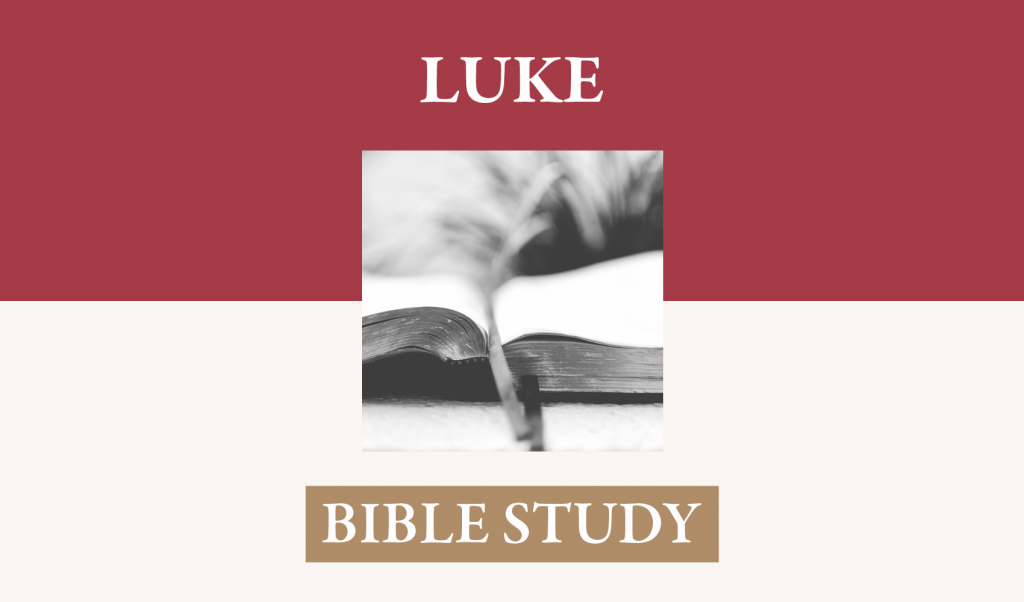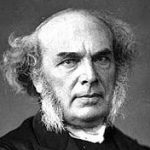JESUS: DELUSIONAL DREAMER OR GOD’S MESSIAH?
Lesson Focus: This lesson will help you experience through Jesus, the crucified Lord, forgiveness of your personal sins, and hope of life in heaven.
Voices in the Crowd: Luke 23:33,35-38.
[33] And when they came to the place that is called The Skull, there they crucified him, and the criminals, one on his right and one on his left. [34] And Jesus said, "Father, forgive them, for they know not what they do." And they cast lots to divide his garments. [35] And the people stood by, watching, but the rulers scoffed at him, saying, "He saved others; let him save himself, if he is the Christ of God, his Chosen One!" [36] The soldiers also mocked him, coming up and offering him sour wine [37] and saying, "If you are the King of the Jews, save yourself!" [38] There was also an inscription over him, "This is the King of the Jews." [ESV]
[33-34] Like the other evangelists, Luke does not dwell on the manner in which the Savior was crucified. Crucifixion was the most agonizing and shameful form of execution ever devised. The Romans confined this form of punishment to slaves and criminals of the lowest type. And yet the physical agony which Jesus had to endure is but the faintest reflection of the spiritual suffering He had to undergo as the Bearer of the sin of lost mankind. For this reason the Gospels give practically no details of His physical suffering, so that the reader’s attention should not be concentrated upon outward things and thus overlook the deepest essence of His suffering. What a pity that in so much Christian art His physical sufferings have been brought so greatly into prominence. As in numerous other instances, each of the Gospels gives only a few details from the story of the crucifixion and of Jesus’ suffering on the cross. Thus no Gospel gives all the words spoken by Him on the cross and we have to take the accounts of all the four Gospels together in order to get a sufficiently full picture. Luke was the only one to record the prayer of the Crucified One for His enemies. It is in perfect agreement with Luke’s preference throughout his Gospel to let the light fall as brightly as possible on Jesus’ limitless love for sinners and the forgiveness of God, that he particularly recorded these words. Jesus is not executed alone. This passage recalls Isaiah 53:12 and Jesus’ prediction in Luke 22:37 that He is to be reckoned among the lawless. Luke’s basic point is that Jesus does not go to his death alone; He is slain as a lawbreaker, with criminals at his side. The three condemned men face execution just north and outside the city, in a place called “Golgotha” in Aramaic, meaning “Skull”. It was given this name because the hill protruded from the ground in the shape of a skull.
[35] Luke divides those observing this historic moment into two groups: watchers and mockers. The term for watching comes from Psalm 22:7, the same “righteous sufferer” psalm cited in the previous verse. In the psalm the same people both watch and mock. They are hostile to the sufferer. Luke’s separation of watchers from mockers suggests that the people who watch are curious rather than neutral or mourning. They want to see the outcome of their demand for Jesus’ death. Their actions are not as severe as the leaders, but neither are they supportive of Jesus. But the call for repentance in Acts 2 shows that the crowd was not positive on crucifixion day, but neither did they directly rebuke Jesus. They merely observe what is taking place. The second group, the leaders, mock Jesus. The key verb "mock" (to turn up one’s nose, to sneer) alludes to Psalm 22:7. Jesus is again the righteous sufferer. The leaders mock Jesus’ ability to deliver others (i.e., perform miraculous works for them) and not Himself. They derisively taunt Him to save Himself if He is the anointed of God. The taunt is sarcastic: they think they have stopped Jesus, they are feeling good about having executed him. But God will answer their taunt in a surprising way in just a few days.
[36-38] The third group, the soldiers, also mock Jesus and offer Him some sour wine. This was cheaper than regular wine and was used among the poor. Apparently the offer is made as a joke, since it is accompanied with a challenge that Jesus, if He is king, should save Himself. The point is that neither Jew nor Gentile understand what they are doing in nailing Jesus to the cross. The soldiers’ mocking shows how the Romans viewed Jesus’ claim of being the Anointed One. They saw a regal claim in the term. The taunt is given because the belief is that Jesus cannot fulfill it. The remark about kingship recalls the examination of Pilate in 23:3 and is based on the note hung on the cross. A placard that revealed the charge was hung on the cross above Jesus. Such inscriptions usually contained the criminal’s name and the charge for which he was being executed. The title King of the Jews indicates the main issue of Jesus’ trials.
Surprised by Grace: Luke 23:39-43.
[39] One of the criminals who were hanged railed at him, saying, "Are you not the Christ? Save yourself and us!" [40] But the other rebuked him, saying, "Do you not fear God, since you are under the same sentence of condemnation? [41] And we indeed justly, for we are receiving the due reward of our deeds; but this man has done nothing wrong." [42] And he said, "Jesus, remember me when you come into your kingdom." [43] And he said to him, "Truly, I say to you, today you will be with me in
[39-41] Luke now returns to the two criminals. One of the condemned criminals speaks with sarcastic disrespect. His taunt recalls those by the leadership and the soldiers. The irony is great, and so is the blindness. The Righteous One dies while being taunted by the unrighteous. Everything is reversed from what one would expect. The second criminal steps in to rebuke the first in simple terms: does he not fear God. The criminal offering the rebuke clearly sees the event as God’s just judgment on them, but he also sees the taunting of Jesus as an expression of intense hypocrisy for which the other criminal would pay. His remarks are really a commentary on all who taunt Jesus, but especially the one who is justly suffering for crimes committed. The criminal asks, “How can you taunt this innocent man when you are deservedly suffering the same sentence? What gives you the right and the nerve to put him down?” The second criminal makes a statement of recognition and repentance. He also testifies to Jesus. This speech is an expression of his faith and what he learned while facing death. Jesus is innocent. This is the sixth confession of Jesus’ innocence from a third source (Pilate and Herod also called Jesus innocent: Luke 23:4,14,15 [twice],22).
[42-43] The criminal moves past confessing his sin and his belief in Jesus to request that Jesus remember him. He is the only person to address Jesus simply by His name. The intimacy, setting, and sincerity are poignant. The criminal seems to anticipate that Jesus will one day have great power. When that happens, he wants to be there. The remark is a messianic confession and expresses the hope of being with Messiah and the righteous. Some saw Jesus raise the dead, and did not believe. The robber sees Him being put to death, and yet believes. Jesus’ response goes beyond the criminal’s request. The criminal’s petition expresses the hope that he will attain to life at the parousia; Jesus’ reply assures him of immediate entry into paradise. The solemnity of the reply is noted by the expression: Truly I say to you. Jesus can and does save, despite what the taunts suggest. The irony should not be missed. A call to Jesus yields immediate results. Surely this story tells us above all things that it is never too late to turn to Christ. So long as a man’s heart beats, the invitation of Christ still stands.
Seeing in the Dark: Luke 23:44-49.
[44] It was now about the sixth hour, and there was darkness over the whole land until the ninth hour, [45] while the sun’s light failed. And the curtain of the temple was torn in two. [46] Then Jesus, calling out with a loud voice, said, "Father, into your hands I commit my spirit!" And having said this he breathed his last. [47] Now when the centurion saw what had taken place, he praised God, saying, "Certainly this man was innocent!" [48] And all the crowds that had assembled for this spectacle, when they saw what had taken place, returned home beating their breasts. [49] And all his acquaintances and the women who had followed him from
[44-45] As the crucifixion proceeds, the heavens begin to comment. The crucifixion began at the third hour (9:00 a.m.); at about the sixth hour (midday), darkness fell over the entire land and lasted until the ninth hour (3:00 p.m.). The darkness recalls an eschatological theme from the judgment imagery of the day of the Lord [Amos 8:9; Joel 2:10; 2:30-32; Zeph. 1:15]. Given this background, these heavenly portents signal the significance of the events surrounding Jesus’ death. An eschatologically significant time of judgment is present. God is watching and signaling His presence. This event is part of God’s working; the signs picture judgment, as well as the temporary prevailing of darkness. The heavenly testimony combines with the ripping of the temple curtain to give a twofold sign from creation that Jesus’ death is important in God’s plan. Luke portrays Jesus’ death as a public event that impressed a variety of people in a variety of ways. The tearing of the curtain signifies the end of the temple’s dominant role as a sacred symbol. Jesus’ death indicates that it is no longer necessary to worship God in the temple. God is pictured coming out of His temple to reach out to all, He cannot be contained within it, and so Jesus’ death represents the ultimate opening up of the way to God. Through the perfect offering of the Lamb of God the way was opened for every repentant and believing sinner to enter into the most intimate communion with the Holy God without any further offerings for sin.
[46-47] Jesus dies with a cry of faith. His final words come from Psalm 31:5. In the original psalm, the remarks are the prayer of a righteous sufferer who wishes to be delivered from his enemies and expresses trust that his fate is in God’s hands. Jesus’ remarks are an expression of righteous faith. Jesus’ prayer of trust is thus an expression of submission to God’s will in which Jesus expresses faith that God will deliver Him. Jesus is a model of the dying righteous one who can rest in God. The prayer contains an address and a statement of faith. The address Father is frequent in Luke. Your hands indicates God’s care. The centurion is the Roman soldier in charge of the crucifixion and indicates that he led a group of one hundred soldiers. Upon observing what has happened, the centurion utters the scene’s final remark, which functions as a judgment over the events. The remark is significant because it comes from a Gentile. This seventh confession of innocence is the ultimate commentary on these events [Luke 23:4,14,15 [twice], 22,41]. Jesus, not His executioners, stands before God without blame. The soldiers accept Jesus’ claims of sonship because of the signs accompanying His death. He is uniquely related to God and is His representative to the people. Pilate’s inscription above the cross is true. Thus the final note about Jesus’ death is that He died as an innocent. He suffered unjustly at the hands of humans. He was whom He claimed to be – the King of the Jews, the Christ of God.
[48-49] The crowd now seems to reconsider its earlier decision to press for Jesus’ death. There were many witnesses to this public event, meaning that many could later describe what took place. These people see the signs and perhaps hear the centurion’s reaction. These events produce mourning over Jesus’ death as the crowd observes the spectacle. Mourning is reflected in the beating of the breast. Sorrow probably results from recognition of the divine signs, which indicate that someone of significance has died. The remarks suggest that this crowd has been moved by the events. They may be seeking mercy for what has taken place. Some taking a close look at Jesus may change their minds about Him. They regret what has taken place to the Innocent One, a view that sees their previous call for His death as wrong. Two other groups watching the events are listed separately because they are distinct from the crowd, having travelled with Jesus. First are those who knew Him. This would have been His disciples, who apparently did not feel safe since they stand and observe events from a distance. This would have been a larger group than just the apostles. Second are the women who followed Jesus from Galilee. They had stayed faithful to Jesus and now stood to see all that was happening.
Questions for Discussion:
1. Why do all the Gospel writers write very little about the physical suffering of Jesus on the cross? What does this tell you about where our focus should be as we meditate on the suffering of Jesus on the cross?
2. The rulers, soldiers, and first criminal talk about Christ and salvation several times in 23:35-39. What does their scoffing imply they believe about what it means to be the Christ and what salvation means? What did they totally misunderstand about the necessity of Jesus dying instead of saving Himself?
3. Meditate on the conversation between Jesus and the second criminal in verses 40-43. Notice the extreme contrast between the criminal’s understanding of the events and that of the other people involved. During this coming week as we prepare for Good Friday and Easter, note how this very same contrast is present in our world today: there are those who mock the significance of the Cross while there are others who believe. What do we learn about salvation from this conversation between Jesus and the criminal?
4. What is the significance of: the darkening of the sun; the tearing of the temple curtain; and Jesus’ attitude in death. How do these events point out the uniqueness of Christ’s death?
Luke, Darrell L. Bock, Baker.
Gospel of Luke, Norval Geldenhuys, Eerdmans.
Gospel According to Luke, William Hendriksen, Baker.

















